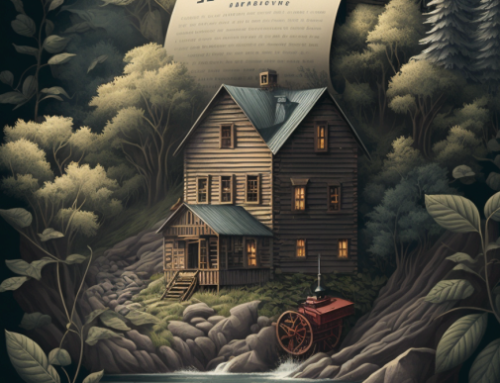We’ve all heard how important it is to have a really great book cover. Despite the old adage, “You can’t judge a book by its cover,” we know we all do — right? Right. And you’ve probably all read how damn hard it is to create really great covers. True?
Okay, now here’s where the contrarian in me comes out. I say hogwash to that. Here, let me
explain. I see many really good authors who end up getting stopped, sometimes for weeks, months or longer, in getting their book published because they don’t know how to create a really great cover, and they don’t have the funds to hire a professional.
So I say, don’t sweat it. Lower your standards just a bit. Go for creating a good cover — the best cover you’re capable of. And that my friends, is not nearly as hard as you may think, especially with the resources that are now available.
Now, this is where I have to differ a bit with one of my ‘indie publishing idols’ and mentors – Dean Wesley Smith. Dean advocates investing the time, energy, and money to learn how to use InDesign — a professional piece of software that the experts use for cover design. It’s an Adobe product that sells for about $500. I’m sure it’s very good, and probably worth the time and money…but if you’re just started out, I’m guessing many of you just choked when you saw that you’d have to lay out 500 smackers just to produce your covers. This is especially hard to swallow if you only have a book or two you want to publish at this point.
Sure, down the line, such an investment could be the way to go…but I’d like to offer a few other choices that will get you moving forward with much less effort — ie, a much shorter learning curve, and far less money to invest.
(Just to clarify, Dean recommends InDesign for covers to be used for your Print-On-Demand books. For electronic editions, he recommends using PowerPoint.)
Book Cover Option #1 – iWorks Pages
My good friend and fellow writing colleague, Joe D’Agnese turned me on to Pages (and in the process became that  much better a friend.) If you work on a Mac it’s a very simple, intuitive program with which you can create quite nice covers. And at less than $20 it won’t break the bank. Apple even has a 30 day trial so you can test it out before you buy. To shorten the learning curve even further they have a set of short tutorials on how to use Pages. (Some of the covers in my book cover collage above were designed using Pages. Read below for a little contest I’m having.)
much better a friend.) If you work on a Mac it’s a very simple, intuitive program with which you can create quite nice covers. And at less than $20 it won’t break the bank. Apple even has a 30 day trial so you can test it out before you buy. To shorten the learning curve even further they have a set of short tutorials on how to use Pages. (Some of the covers in my book cover collage above were designed using Pages. Read below for a little contest I’m having.)
The downsize of covers created with Pages is that they’re really only good for your e-book editions. But there is a way around this with Option #2.
Book Cover Option #2 – KDP Book Cover Creator
KDP has, what I consider to be, a very credible Book Cover Creator. With it and a little imagination and creativity, you can create countless different book covers. There are approximately 40 different book designs, but each one can be widely changed with different themes, different background colors, back cover content, and front cover images. In fact, by using something like TechSmith’s Jing, you can capture the front cover image and make it into a perfectly usable cover for your e-book edition as well.
One Last Tip for Now – Where to Get Images for the Covers
I’m sure there are a ton of options here. I’ll give you several that I use most regularly:
From my own photo album – This is great because if you took the picture yourself, you know you own the rights to use it (at least in most cases).
Dreamtime.com : This is a great resource for royalty free images that are very reasonably priced.
MorgueFile.com: Free and royalty-free.
PixWizard: Here’s what PixWizard has to say about the resources they provide. “Stunning library of over 1 million stock images and videos. Royalty-free and safe for commercial use, with no attribution required.” Best of all, their service includes an image editing tool attached!
Pexels: Here you will find free stock photos and videos.
Unsplash: The internet’s source of freely-usable images.
Find and Seek Permission: Three of my favorite images that I’ve used on covers came from my searching the internet for them, then tracking down the artist and negotiating to use the image. I’d never use an image without the artist’s permission – that’s bad karma not to mention illegal in most cases. But I have found artists to be quite understanding, generous, and willing to collaborate in this way.
In fact, three of the covers above have such images.
Update
One other resource that I’ve found works well for me. A very reasonably priced book designer who goes by BetiBup. Check out his large inventory of pre-made covers. Check out this cover on Amazon:
Ghost Elephant (pre-made and adjusted to my requirements)





Leave A Comment